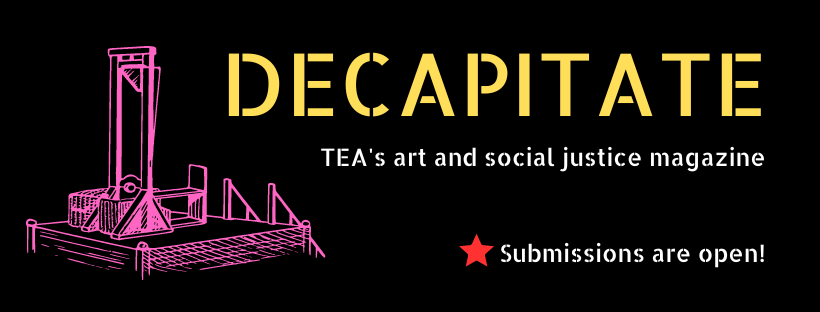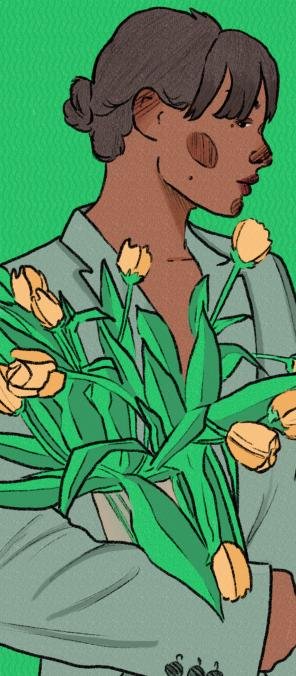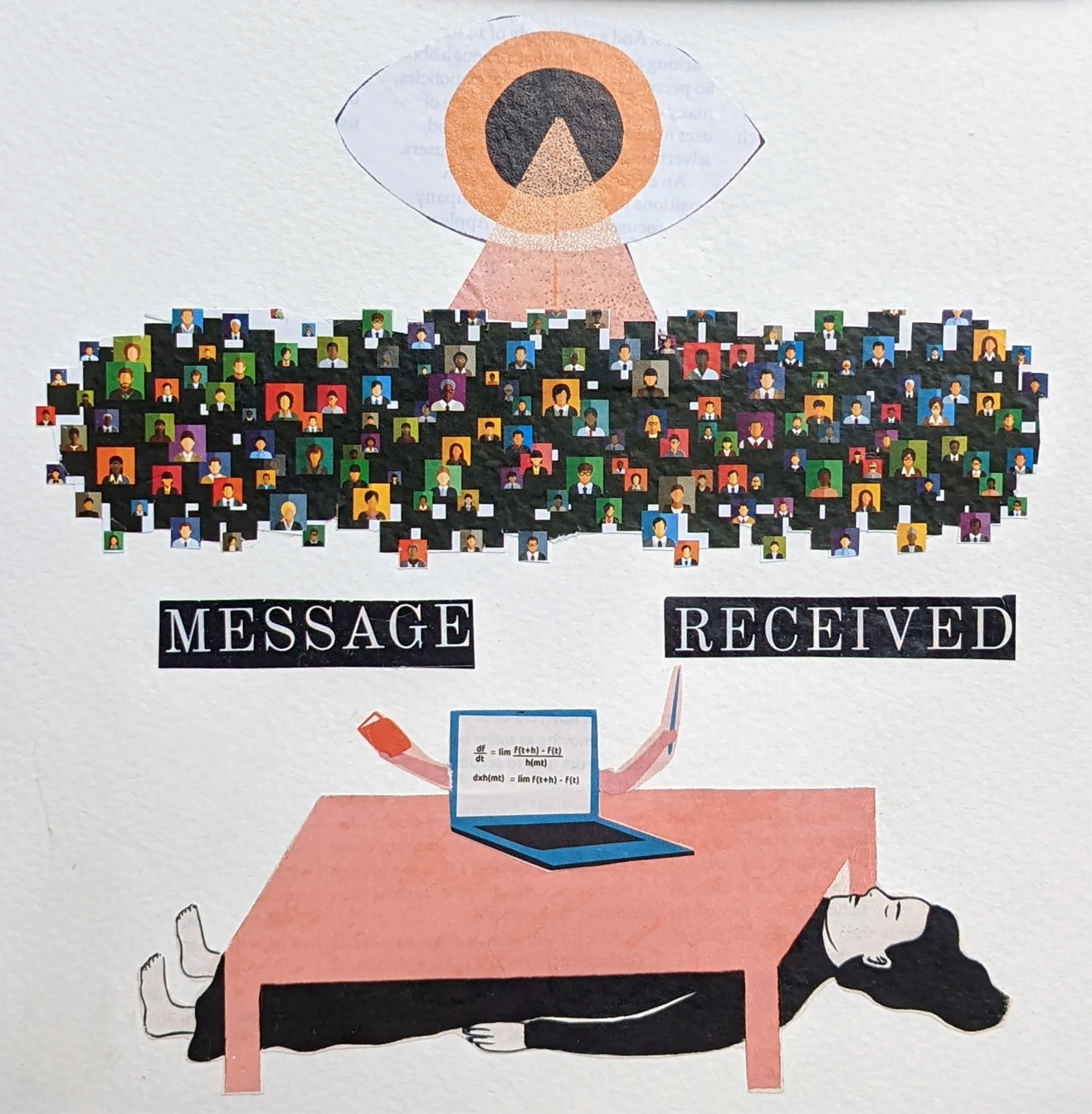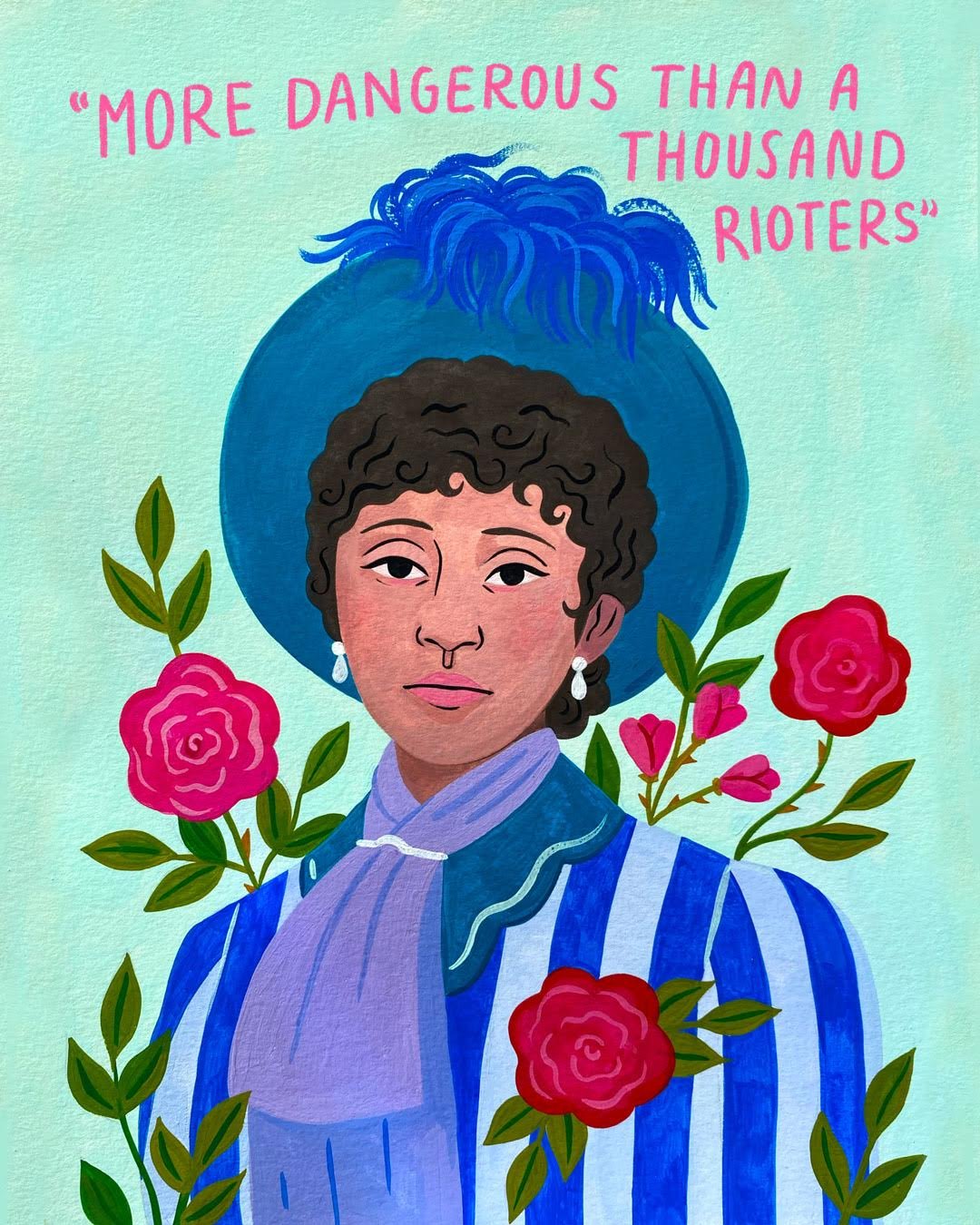When I think about teaching, especially thinking about the teaching of writing, I begin worrying my memories of my years in professional “experimental” theater. From about 1967 to 1974 groups of unaffiliated thespians in New York City, of which I count myself, were engaged in creating a new kind of theater. Some of these thespians formed groups, such as The La Mama and The Ridiculous Theater, that were stationary and operated as semi-permanent ensembles, but most were independent of any organized associations and came together for only a brief moment to present their productions in lofts in Soho, church basements in the West Village, and even abandoned warehouses in the lower east side and Brooklyn. Those involved made little, if any, money and were able to pursue their craft financially only through the courtesy of an Actor's Equity Showcase clause that allowed professional thespians to showcase their talents without pay and union repercussion for six weeks per production. Thus, the conditions and circumstances came together that allowed these theatrical visionaries to pursue their vision of a transactional and truly revolutionary theater.
The movement died because of its refusal, or, perhaps, because of its inability, to become mainstreamed as a legitimatized American art form of the American Theater. American Theater at that time was, increasingly, becoming trapped between the classical demands of capitalism for ever greater margins of profit on ever smaller investments of venture capital and the artistic demands of a cold war politics played out in the arena of high culture.
Broadway theater, at that time already steeped in the practices of capitalism, drifted further into a reliance on the capitalization of sentimental spectacle in order to survive while the traditional, dramatic theater (best represented in the US by the work of Miller, Williams, et al.) found economic refuge in universities and government grants. Vestiges of this forgotten theatrical movement, what the French once called la theatre quart d’heure, remain in the minimalist movement of modern opera, although greatly diluted through co-option.
Sets in this theatrical movement were usually limited to props and costumes, although the best of the productions usually limited costuming efforts to the casual street wear owned by the performers. Perhaps in the beginning, these limitations were imposed by economic necessity and determined by the physical confines of the available performance space, but these “disadvantages” were quickly used to advantage, with a resulting artistic focus on the demands of a performance rather than on the demands of the art. But this creative adaptation to advantage of limits, alone, would not make a theatrical movement. Many amateur theatrical groups today adapt to such lack in similar ways. The most remarkable trait of this almost forgotten theatrical movement that is relevant to the text below is its practice of perpetually revising the relationship between writing, performance, and the sources from which each sprang. The use of revision as a space and source for artistic invention created the necessity for the total participation of all present (i.e., the actors, the director, the audience, the stage crew, and so on) from the beginning to the end of a scheduled performance.
Writing for this kind of theater became something different than writing a scripted narrative that is exhaustively rehearsed, as is the traditional practice when writing a play, an essay, or a book. Great gaps of silence in the text of a performance were created by and for the performers, and, unlike the gaps of silence in theater of the absurd, like those Pinter or Beckett created for the emphasis of the lack of a signifier, these gaps were spaces created for the concerted attempt of all involved to break down the signification of a signifier, to create gaps in which all the performers could explore the flows of their experience of the performance through body movement, speech, sound, props, or any combination of what and who was at hand at the moment. Whether that exploration was ad-libbed or rehearsed, the traditional flow of emplotted narrative was interrupted and the interruption filled with the suggestion of the disjunctions found in the experience of the rational, compossibilities (to borrow a Leibniz/Deleuzean term), of or . . or . . or . . or, brought about by an interactive, but disjunctive, movement between the audience and the performer that was textually created and explored. Each word, sentence, or limited narrative of a script written for and in this theater became launch points, marked breaks in the flow of traditional narrative structure, from which alternative possibilities for meaning were explored.
I remember one particular production of Megan Terry’s, performed at the La Mama Café in Greenwich Village, in which snippets of dialogue were performed by the cast members within a tag-team format. The performers sat with the audience around the performing space before, during and after the scheduled performance. Two would begin their performance of a scene and at the whim of the director one, or both, of the performers would be replaced on a signal. The bits of dialogue within a performed scene were given context and narrative significance only through the voice inflection and body movement of the performers. The narrative expectations of the audience and performers were disrupted, changed, by the interplay of the differences of the performances given by each performer as they changed partners during mid delivery of a line or narrative sequence. Meaning became revealed as contingent upon their line deliveries, their voice inflection points and modes of emphasis, and their performative approaches to the dialogue, the moment of performance, and the audience. The compossibilities of signification, the flows of the performance, the action of deterritorializing and reterritorializing interrupted signifiers within a narrative was liberated from the despotism of the Playwright's voice as the signifier of a high, theatrical culture and created a glimpse of a kind of democratic, guerrilla theater.
This was not improvisational theater, in which the despotism of the Playwright's voice as a signifier of a high culture is supplanted with the despotism of expressivism, the glorification of a performer's individual voice, as the authorized signifier of a signification. The "story" of this democratic, guerilla theater was not the story of narrative signification or the story of expressivist manipulation. The story of this democratic, guerrilla theater was the story of the flows of desire at work in the creation of meaning, the breaks and cognitive copulations, the eros, always at work between an audience, a known text, an expectation, and a performer that creates signification within a performed text.
I once watched a production of theatrical poetry. One particular work was entitled "Great Balls of Fire." The performers left the stage and large luminescent balls were tossed from wing to wing for some fifteen seconds. The irony of literal signification brought gales of laughter from the small audience, but what followed was an almost preternatural silence, that was, in itself, a signification that preceded a signifying burst of applause.
Who could imagine such a way of writing, such a way to experience writing? A writing that is both voiceless and many voiced, that is performative, entertaining, and dead, but naturally so, unlike the artificially animated, conventionalized, voice-graphic writing of what passes for dramatic writing within American theater today. Can this kind of multi-leveled, performance centered writing move from the theatrical arena into print, into thought? Can the writing that once served to create a fleeting but democratic, guerrilla theater serve as a writing for all media, as a paradigm for the act of writing without becoming paradigmatic? These are some of the questions that motivated the explorations that resulted in this text.
The best way to introduce my thoughts on a performative writing and the teaching of any genre of writing is to borrow an opening line of Susan Miller’s from Textual Carnivals: “This study is blatantly a fiction, which is to say that I have come to understand the politics of writing by learning that power is, at its roots, telling our own stories” (1). What follows below is a fiction of the worst sort. I eventually advocate the use of an autobiographic writing to promote the discovery of a democratic discourse and its possibilities for teaching writing, but I do so within the conventions of an academic discourse that permits only superficial gestures towards the autobiographic genesis of any text. The genesis of the text of this dissertation, the space in which it appeared and developed, began as a selective gathering of particular beliefs and practices that have shaped the experience of my life as a life. The dominant discourse conventions of the academy authorizing the following text as knowledge demanded that I restructure that experience as history, as a phenomenology of shared experience and expectations in which we all move and breathe, much like fish in a fishbowl who are self-consciously aware of the public display of their fish(y)ness.
I came to higher education with little more than a vague desire for bettering my economic marketability within the very volatile job market of the mid 1980s. I was spurred into reinventing my “self” by an economic necessity. I came to higher education as a white, middle-aged male with a lifetime of experience that meant naught because its meaning as knowledge was unthought by me, or so I was so subtly informed by the texts I was assigned to read and the practices I had to master in the new-to-me environment I had so trustingly leaped into. The validity of my personal experience as a basis for knowledge was denied by the demands of my new social role as student and the institutionalized practices I had to master. Making “history” of this experience demanded that I accept, consciously or unconsciously, the transformation I underwent and would perpetually undergo to become a “successful” student as a willing, even if uninformed, submission to a politically and socially intentioned manipulation. To question the “truth” informing that manipulation would entail the recognition of an evil cynicism or unbelievable naïveté at work in either my intentions or those of the social objectives of liberal education. I must confess that I am ambivalent in my judgment of the possibility of a political cynicism or naïveté inherent in the social objectives of the liberal education I experienced. It is out of that ambivalence that the investigations of political theory that underpin this work sprang.
Teaching as an ethical activity, in the situation described above, strikes me as tacitly accepted within Western society as a structured manipulation that is assumed as necessary for the preservation and pursuit of the “humaneness” of humanity—an obvious legacy of the ontological humanism shaping the metanarrative of an enlightened modernism. I suspect that teaching, like so much else we take for granted in our thinking, can be constructed as something Other, as an activity arising from the situations and experiences of those taught rather than from the “history” of those teaching or from the formalized intentions of the institutionalized social objectives authorizing the activity of those teaching as teaching. Present pedagogy and the theory informing present pedagogical practices assume a lack within each student that is rooted in a moral negativity. For all the Rousseauian philosophical proclamations made by the promoters and practitioners of enlightened liberal education that human nature is innately good, the actual practices of teaching steeped in the ancient assumptions of the duality of human nature that ideologically structure pedagogy as pedagogy are revealed as Hobbesian in their dark assumptions about the true character of innate human nature. They are revealed as such if we question teaching as an activity whose practices and objectives are founded and justified by an officially “authorized” objective of history as the teleos of all human endeavor. Consequently, any act of teaching undertaken as an act to achieve the objectives of an enlightened liberal education within these circumstances and assumptions assumes as moral the perpetuation of a politics of justice that functions to repress a human nature that is constructed as fundamentally oriented toward individual gratification and destructive of a common moral good.
I have wrestled, sometimes covertly, sometimes overtly, with the question of what constitutes an ethical political action within a politicized writing classroom that is democratic in its procedures and objectives. Once anyone realizes that all social action is political, that any action taken, contemplated, or deliberated is always already political, they realize that a differend (Lyotard) is always already at issue at the inception of any act. Consequently, if a teacher understands her “teacherly” self as a political fiction, she tends to fictionalize her politicized teacherly self as a radical, revolutionary, liberal, conservative or reactionary and comes to understand her fictionalized “self” as a political posturing, a constructed stance that is founded in the “history” of her personal “resolution” to the experienced conflict of an ever present differend. If a teacher fictionalizes her teacherly self as radical, she may come to understand that her resolution to her experience of the differend is rooted in a posturing defined by a grand politics of justice. If she constructs herself as a revolutionary, she must eventually come to understand her resolution of the differend as an indulgence because justice, as a politics, assumes the ever present existence of a differend that is always irresolvable, that is fundamentally always already non-negotiable without some form of assimilation or appropriation of the difference that creates the conflict that marks the presence of a differend. If she constructs her “self” as a radical revolutionary, she must come to understand that justice “justifies” the violence of an imposed equilibrium through the granting of an absolution because justice assumes the always already existence of the differend as a transgression, an original sin that stains the motives behind every human endeavor.
To be radical or revolutionary, here, is simply a matter of degree, a matter of self-indulgence because to give oneself over to the non-negotiable incommensurability of the differend in a politics of justice is self-destructive, an intentional leap into the abyss of the difference that marks the truth of the differend, which denies the possibility of a justice because such a leap is a leap into a chaotic unknown. To make such a leap and believe that death and/or injury are not inevitable is not rational. It displays a delusional self-indulgence of the worst kind.
To leap into the unknown in protest of the status quo as unjust is rebellion for rebellion’s sake, from the perspective of a politics of justice. Such a rebellion is constructed as an adolescent gesture, worthy of note only in the tragedy of its waste.
To leap into the unknown just to leap is simply irrational, construed as an act of illness within a politics of justice. To leap just to leap and believe that you will survive simply because you have leaped is clearly delusionary and has nothing whatsoever to do with justice, let alone politics.
Or, so a politics of justice would lead us to believe.
Francis Fukuyama in The Great Disruption published in 2000 writes about a social space that spontaneously appears in response to the convergence of need and opportunity that may reveal a politics that could serve as a viably democratic alternative to a politics of justice. He reports on a seemingly mundane social phenomenon that occurs regularly at the intersection of Bland Street and Old Keene Road in Springfield, Virginia, a suburb of Washington, D.C., where “a line of people forms during the morning rush hour. A car pulls up, and two or three commuters—none of whom is known to the driver—get in to ride north into downtown Washington. In the evening the same ritual unfolds in reverse, with cars full of strangers returning from downtown and dropping their passengers off so that they can pick up their own vehicles and head home” (143).
These strangers call themselves slugs and their unusual social arrangement developed spontaneously to take advantage of the creation of HOV (High Occupancy Vehicle) lanes that can trim as much as forty minutes off a daily commute undertaken in a single occupant vehicle. This practice of slugging arose in immediate response to a perceived opportunity and has evolved, Fukuyama reports, “an elaborate set of rules over the years” that has yielded only two criminal incidents in thirteen years, both of which happened on dark winter mornings when few people were standing in line (144). However, Fukuyama points out, the practice of slugging, although not deliberately created by anybody, could not emerge just anywhere. He observes that:
[t]here are many neighborhoods in the Washington area where this kind of order would be very unlikely. Some neighborhoods are too dangerous for people to wait on the street; in others the residents are too transient or culturally heterogeneous to agree on rules. Slugs are willing to get into the cars of complete strangers—to trust them—because, in the words of one participant, “They’re government workers. . . . They’re harmless” (144; emphasis and ellipsis Fukuyama’s).
In other words, the practice of slugging arose from a convergence of congenial happenstance that was spontaneously capitalized upon by individuals seeking a solution to an individual need or desire. The differences in perspective among the slugs that in other neighborhoods and times would prevent the practice of slugging from forming and remaining viable over a prolonged period of time are set aside or explained away in the fiction that “They’re government workers” and, therefore, “They’re harmless.”
The important aspect of slugging as a practice is that it arose and functions as an arational act that resulted in the creation of a viable social capital. Slugs are not responding to an organized call for action or functioning within an imposed social or political protocol. They are acting arationally, which identifies their actions as actions that happen in response to simple stimuli and, thus, arational acts emerge holistically from a particular convergence of congenial happenstance to create a coherent and recognizably structured behavior that persists over a prolonged period of time. A structure arising arationally seems to grow of its own accord but it entails a complex set of behaviors that arise from the consistent and prolonged practice of a few simple rules. A rational act, by contrast, is logically consistent in its development of rules of behavior that are hierarchical in their logical priorities, and is usually imposed by an outside agency on a target group in its execution. An arational act is also fundamentally different from an irrational act in that an irrational act is one that appears as completely random or unfounded in any system of ordering that is explainable within a discernible and enduring pattern of linking and/or arrangement. An act is irrational when it fails to conform to a pattern of behavior deemed rational by the party judging the value of the action.
In other words, the example of the behavior of the slugs exhibits in its arationality a heretofore unrecognized path to the development of social capital that, in Fukuyama’s words, “emerges in a spontaneous and decentralized fashion” (145). Slugs leap into an abyss of difference armed with only the belief that the strangers they are interacting with are only “government workers,” and, because of their government worker identity, “[t]hey’re harmless.” The upshot of this kind of arational development of social behavior, Fukuyama notes, is that it functions as demonstrative proof that “[s]ocial regulatory norms [. . .] will arise out of self-interested interactions of individual agents and do not have to be mandated through law or formal institutions (192). Arational social phenomenon, he states, is facilitated by iteration: “That is, if people know that they have to live with one another in bounded communities where continued cooperation will be rewarded, they develop an interest in their own reputations, as well as in the monitoring and punishment of those who violate community rules” (193). These bounded communities, as the example of the slugs demonstrates, can be, and usually are, quite different in their formation and purpose than the traditional conceptions of community found in Western society that are modeled on the Greek idea of community as polis.
Since these iterative communities are not bounded by an imposed rational order but become bounded through an arational process emerging from quite localized phenomena and practices, they are inherently democratic in nature because participation is a matter of choice and not limited by an externalized and morally or politically imposed criteria. Slugs leap, or, perhaps more accurately, they hop into the abyss of difference on a daily basis because they are motivated to participate only by their singular desire to participate in the benefits of participation. So thin and unfounded is the logic that justifies the trust underwriting their daily leap that the abyss of difference they leap into appears to them more like the stepping across of a threshold, an action perceived as little more important or dangerous than stepping across the thresholds of their homes or offices. This is not an activity or social capital that is founded on a politics of justice. If anything, it is founded on a politics of desire that is made rationally and socially acceptable in the vocabulary and syntax of a politics of justice.
We can begin to see once we make room in our thinking for the ideological and political validity of arational acts that, as Kurt Spellmeyer in “On Conventions and Collaboration: The Open Road and the Iron Cage” puts it,
There is, in other words, always a degree of slippage between custom (or culture) and social structures, between evolving human purposes and more stable institutions—and neither the structures nor their cultural underpinnings are consistent in themselves. Although social systems provide a “loosely integrated” framework for future action, they cannot predetermine the shape, pace, or direction of this action on any scale, if only because no system is free from inconsistencies, and no society—no community, as we might put it—has yet managed to escape all the vestiges of difference and dissent. But to escape them at some future time would be,[. . .], an absolute disaster, since inconsistencies permit the fabrication of new knowledge in response to changing circumstances of the re-formation of established knowledge on behalf of those hitherto excluded from the inner circles of social power (89-90).
The recognition of arational acts as political acts that display a decided affinity to what is commonly held as democratic behavior in their execution supports Kurt Spellmeyer’s charge in his 1994 article, “On Conventions and Collaboration: The Open Road and the Iron Cage,” that “although culture is indeed a construct, there are no rules for constructing society itself because the act of construction always begins where it is needed, at the points of discontinuity, tension, exclusion, and rupture.”
The recognition of arational acts as a basis for creating social capital throws into question most of the structured relationships between the private and public realms of experience that shape Western political thinking and, consequently, the pedagogical objectives and practices of liberal “social-constructionist” thinking within a liberal college education.
Arational acts strongly suggest that people function socially as singular individuals bound to community by circumstance and in willing, if often tacit, agreement rather than as citizen individuals of a nation/state bound in community by constitutionalized moral commitments to a morally and intellectually abstracted humanity.
The distinction between an individual and a singular individual arises from poststructuralist thought on identity formation, where individuation is theorized as not arising from a naturalized correspondence between internalized qualities of character and externalized behavior but from the interplay of forces that shapes the perspective of a knowing sentience.
Deleuze and Guattari in their books Anti-Oedipus and A Thousand Plateaus appear to envision the singular individual as a singularity of experience who acts in accordance with her will to life--her desire. The individual as a singularity of experience exists as a singular manifestation of the universal experience of desire, and they act in an immanent field of experience that will fulfill that desire. If identity resides at all in this conception of the individual, it resides at the point of cognitive movement, the point of perception where cognitive thought consciously engages the possibilities inherent in the fields of action that open during fleeting congruence of aleatory circumstance. With each act of cognitive movement the individual experiences as discovery the possible scopes for identity, scopes which exceed the limits of conception provided by conventionalized constructions of identity. Identity, if what follows such movement can be construed as identity, spills into a realm of contiguous possibilities that are simultaneously the same and different.
The only constant within this conception of identity is the experience of change and movement as the stuff from which we, as an intelligence, are made. It is the intensity, the devotion of attention and action as thought to the cognitive mapping of the direct, unfiltered experience of possibility as the realm of identity that marks the difference between the political action of a singularity and that of an individual. The creation of meaning in language for an individual as singularity is no longer caught in the descriptive/prescriptive loop of the great postulate of language at work in our culture. The language of a singularity enunciates the scope of possible cognitive movement at any given moment and becomes part of the value, the intensity, of experience, rather than the agent for smothering the intensity of meaning through acting as both the definer and the representative of experience.
The possibility for a writing that presents itself as something other than the recording of the determination and representation of thought begins to present itself here. We see the nascence of such a writing in the work of such writers as Deleuze, Guattari, Bataille, Cixous, Barthes, Kristeva, Vitanza and a host of other poststructural thinkers. The great difference in such a writing is that its source for meaning resides in the affective space that singular readers and writers map in language and within the action of a singularity who undertakes the task of creating/discovering meaning within that space.
In light off all the above, the question of what constitutes an ethical political action within a politicized classroom that is democratic in its procedures and objectives begins to appear to entail a massive task of redefinition. The interweaving of all the elements involved, elements commonly thought as distinct and separate realms of investigation, raises the specter of redefining not only categories but the idea of categorizing itself. As I write the possibility of such a task, I think of the opening line Michel Foucault wrote in his preface to The Order of Things,
his book first arose out of a passage in Borges, out of the laughter that shattered, as I read the passage, all the familiar landmarks of my thought—our thought, the thought that bears the stamp of our age and our geography—breaking up all the ordered surfaces and all the planes with which we are accustomed to tame the wild profusion of existing things, and continuing long afterwards to disturb and threaten with collapse our age-old distinction between the Same and the Other (xv).
As members of the oldest surviving democratic republic in history and as very involved participants in the first time ever attempt to extend the possibility of a literate education to all who are alive as a right of their humanity, we tend to forget how new that idea truly is in relation to the number of generations who have recorded fragments of their own passages and thoughts on this earth.
A writing that encompasses and claims to perpetuate the experiences of democracy as democratic should in and of itself question any practice whose ideological validity appears as self-evident. At the moment the very idea of democracy as conceived above is under severe attack from groups dedicated to the capitalist idea that all human endeavor is to be understood in terms of monetary profit. Their tactics focus on disrupting the idea of education as a human right and replacing it as a human necessity that must be carefully controlled and guided for the preservation of a working society. The idea of a democratic classroom arising from the voices of the students may very well run into the same barriers and difficulties of the early democratic guerilla theater in New York in the late 60s and early 70s. It may very well suffer the same fate unless the reality of shared experience is recognized as the very fuel and building material of democracy itself.












